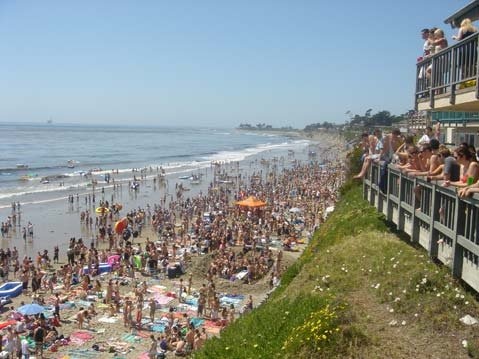The Grass Is Always Greener
Goleta Looks to County to Loosen Grip on Revenue Neutrality Agreement

The County/Goleta revenue neutrality agreement (RNA) continues to generate much sound and fury, and some history about such agreements might help clarify the discussion. First, the State Legislature passed a law in the early ’90s, and it is now codified in the state Government Code, section 56815. The law states that when cities incorporate, the negative fiscal impacts on counties must be addressed.
The state passed this law because new cities were gerrymandering their borders to include areas that generate tax revenue, such as shopping centers and auto malls, and excluding areas that had high service costs such as residential areas. This caused financial hardship for counties, which are obligated to provide many county-wide services for all residents whether or not they live in cities or counties.
The law says that the Local Agency Formation Commission (LAFCO) must provide an independent analysis of cityhood proposals, determine expenditures and revenues for the affected areas, and come up with financial arrangements so that neither the city nor the county suffers fiscally.
In Santa Barbara County, LAFCO members include county and city representatives. Even though the county funds LAFCO, it is an independent body. LAFCO’s executive director at the time of the incorporation was Bob Braitman. He had many years of experience with Ventura County and with Santa Barbara County LAFCOs. For Goleta, LAFCO approved the cityhood proposal along with a revenue neutrality agreement and the measure went to voters who approved both.
So, what are some of the services that counties provide to all residents? Some of the largest county expenditures include the law and justice departments such as probation, the jail, public defender and district attorney services, and the courts. Counties also provide fire protection, health, welfare and mental health services as well as environmental health, agricultural commissioner, assessor, tax collector and auditor-controller functions among others.
Also, Santa Barbara County has one of the largest county park systems in the state, and Goleta Beach Park is the most frequented of all these jewels. Goleta Beach Park costs more to operate than it receives in revenue, and cityhood proponents specifically excluded this park from the city boundaries, probably because of the cost. Also excluded from the city were large residential areas such as Noleta and Isla Vista. Next door to UCSB, Isla Vista alone creates huge costs for the county, especially for the Sheriff’s department. Prosecution, defense, and court services for all crimes committed are county costs regardless of where they occur. If Goleta wants to annex Isla Vista, I am confident that the county would renegotiate the RNA.
Goleta City Councilmember Jim Farr and Mayor Michael Bennett assert that the huge county with a budget of $850 million is hammering the poor City of Goleta with it’s $20 million budget. Comparing a county budget with a city budget is silly. They perform completely different services. The Sheriff’s budget alone is five times larger than the entire city budget.
Mayor Bennett also asserts that Goleta does not have adequate funds to “institute a parks and recreation department.” Presumably the citizens of Goleta frequent Goleta Beach Park as well as Tucker’s Grove, which are both county parks. Mayor Bennett was very active in the cityhood movement, and he could have proposed including Goleta Beach Park within the city.
The northeast boundary could also have included all the residential properties nearby in order to include Tucker’s Grove. That would have added a large fiscal burden on the new city; moreover, the Noleta folks would have voted against incorporation. The city proponents drew boundaries to enhance revenues and decrease costs and to ensure cityhood would pass. They also signed off on the revenue neutrality agreement that went to the voters.
Now city leaders say that the RNA is a monster, the county has lots of money, and it should share some with Goleta. On what basis? This makes no sense (or cents), and I feel confident that the state would not concur with any proposal in which the county just handed over money because the elected officials in Goleta think it’s a good idea.
Linda Thom is a retired budget analyst who worked in Santa Barbara’s Office of the County Administrator. She lived in Noleta and now lives in Washington state.



